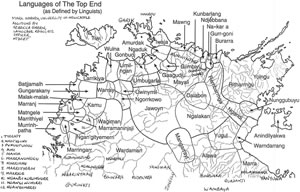How cuts to the NT Education Department could widen the gap
How cuts to the NT Education Department could widen the gap
WAMUT | OCT 31, 2013
First, they rejected Gonski because too much funding would go to remote community schools. Now, the NT Education department is cutting positions that are key in supporting Aboriginal students who don’t speak English at home. Greg Dickson demonstrates the benefit that such support positions can bring and argues that the NT Government’s handling of education could easily cause the much-discussed “gap” to widen rather than narrow.
Yesterday’s report on school attendance paints another bleak picture for Aboriginal education in remote parts of the Northern Territory. School attendance, which already sat at a low base, is worsening. This is on top of unacceptably low rates of students meeting standardised testing benchmarks which puts the NT as the worst performing COAG member. Yet at the same time, the Northern Territory Government is responding in ways that raise serious doubts about whether they are acting to improve the situation.
Earlier this year when the former Labor Federal Government was working hard to roll out the Gonski recommendations to the states and territories, no amount of coaxing could get NT Chief Minister Adam Giles and the NT Government on board. According to them, it required them to spend money they didn’t have. Even after the Federal Government sweetened the deal by offering an extra $75 million to their contribution, the NT Government still decided to pass. In addition to budgetary reasons, the CLP Government felt it was an unfair model because, in rebalancing school funding, the main beneficiaries would be remote schools – i.e. predominantly Aboriginal students.
Giles’ press release bleated: Canberra is trying to hoodwink us into signing up to a bad deal that diverts money away from urban students in Darwin, the rural area, Palmerston, Alice Springs and Katherine and redistributes it to remote schools.
Increase support for remote schools where students are faring the worst? God forbid! And so it appeared that the status quo in remote NT education was to remain. But only until the NT Government started to put its cuts to the education department on the table, cuts that only look like exacerbating an already bad situation when it comes to remote Aboriginal students.
At a rally in Darwin last month, Dr M Yunupiŋu’s widow, Yalmay, a qualified teacher with over 30 years experience, presented a bark painting to the NT Government, symbolising the importance of education. The Government hasn’t budged and will cut positions; on Monday the ABC reported that 71 positions will be cut which “will include class support roles, such as English-Second-Language teachers and behavioural support staff”. Further reports on the ground are that the department’s linguists have been left off organisational charts, the “English as an Additional Language” unit has been decimated and ESL and Indigenous language support positions in North-east Arnhem Land are gone (despite NT Education Minister Peter Chandler claiming that part of the restructuring is about regionalisation).

Recent education rally in Darwin (Photo source: ABC)
It should be of grave concern that the NT Government thinks that ESL specialists are superfluous and is putting them on the chopping block. Such educational support is absolutely crucial to the Northern Territory which has the nation’s highest proportion of residents who don’t speak English at home. Linguists, ESL teachers and other specialised educational professionals who support non-English speaking students have been a key part of the NT’s education system since the 1970s when bilingual education was rolled out, allowing, for the first time, Aboriginal kids to read, write and learn in the same language they think in: their mother tongue.
But it’s not nostalgia for the era when bilingual education was strong that makes it worrying that ESL support staff and linguist positions are being cut. There are few local Indigenous teachers fronting classrooms, speaking the same way their students do. The vast majority of classroom teachers, despite doing fantastic work to deliver the curriculum they are given, are at an immediate disadvantage by knowing very little of the languages their students bring into the classroom each day. This is where specialised staff are crucial and there are already too few of them.
I’ve spent much of my time as a linguist working in the community of Ngukurr where everyone speaks Kriol – a creole language based heavily on English but distinct enough that it has its own sound system, grammatical rules, lexicon and norms on how to do things like ask for stuff, talk about personal issues and discuss grievances. A few years ago, because access to ESL support within the department was difficult to obtain, some motivated non-Indigenous teachers from the local school in Ngukurr asked for help from me, an outsider. Together with a couple of Ngukurr locals, we ran a very basic course on Kriol for about a dozen non-Aboriginal teachers. A two-day course doesn’t get you too far, but can set off some lightbulbs. Some teachers didn’t understand why their students just couldn’t get the hang of making plurals e.g. one dog, two dogs. When we pointed out that Kriol doesn’t mark plurals on nouns (but can do so with articles or adjectives), several teachers had an ‘ah-ha!’ moment. When we told them that Kriol only has a few prepositions and that the Kriol preposition la covers in, on, at and to (among others), it suddenly clicked as to why kids took so long to acquire English prepositions. When we explained that Kriol, like many Aboriginal languages, doesn’t have a separate pronoun for he and she, but just uses im, suddenly teachers understood why some of their students confused the two. And then when we explained that the English pronoun we has four possible translations in Kriol, depending on whether you’re referring to two people or more than two and on whether you are including the person you are talking to or not, we managed to confuse the teachers and replicate what their students experience when they have to grapple with learning a new and complicated language.
This is the type of support and information that linguists and ESL specialists can offer teachers and their students. If the NT Government cuts these positions, not only will teachers not have access to such information and support, even worse – there won’t be anyone in the NT Education Department who even knows this type of helpful linguistic information.
I thought the point was closing the gap, not broadening it.
Written by G Dickson (Wämut) for Fully Sic, Crikey’s Language Blog
Accessed at http://blogs.crikey.com.au/fullysic/2013/10/31/how-cuts-to-the-nt-education-department-could-widen-the-gap/

 3
3
